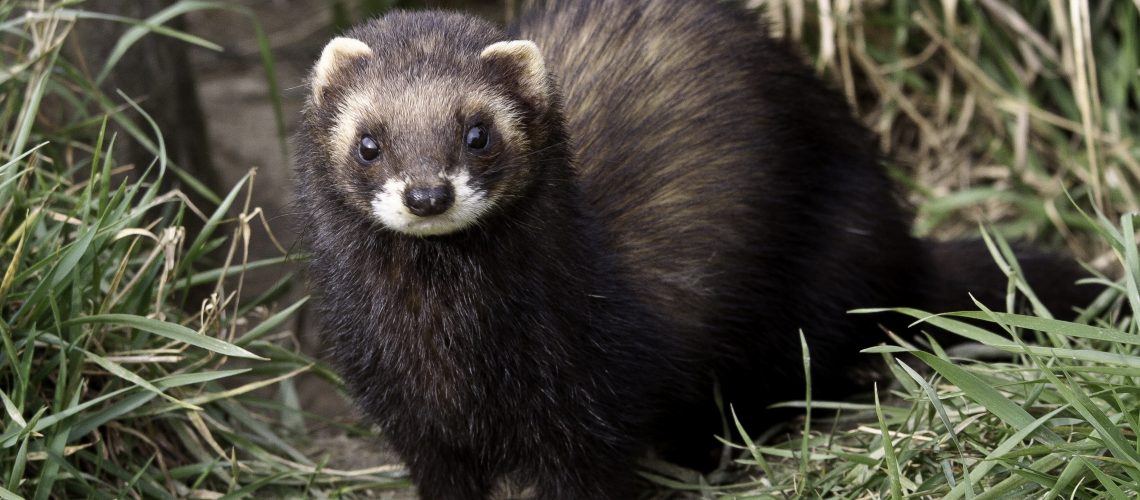
We were recently asked to write a guest blog for Scottish Invasive Species Initiative, after they caught a couple of polecat-ferrets in their mink traps. This blog is reproduced below.
What is a polecat?
The polecat is a native mustelid (member of the weasel family) and is closely related to the pine marten, stoat, weasel and otter.
Once widespread in Britain, the polecat population declined during the 18th and 19th century, primarily due to persecution, and became confined to a refuge in mid-Wales, Shropshire and Herefordshire by the early 20th century. A decline in gamekeeping and the banning of the gin trap in the 1950s led to a reduction in persecution pressure which allowed polecats to start to recover during the 20th century. Subsequently, the population has re-colonised much of its former range in Wales and England and Vincent Wildlife Trust has been assessing the changing distribution of polecats in Britain. It has carried out three national distribution surveys, the most recent during 2014-2015.
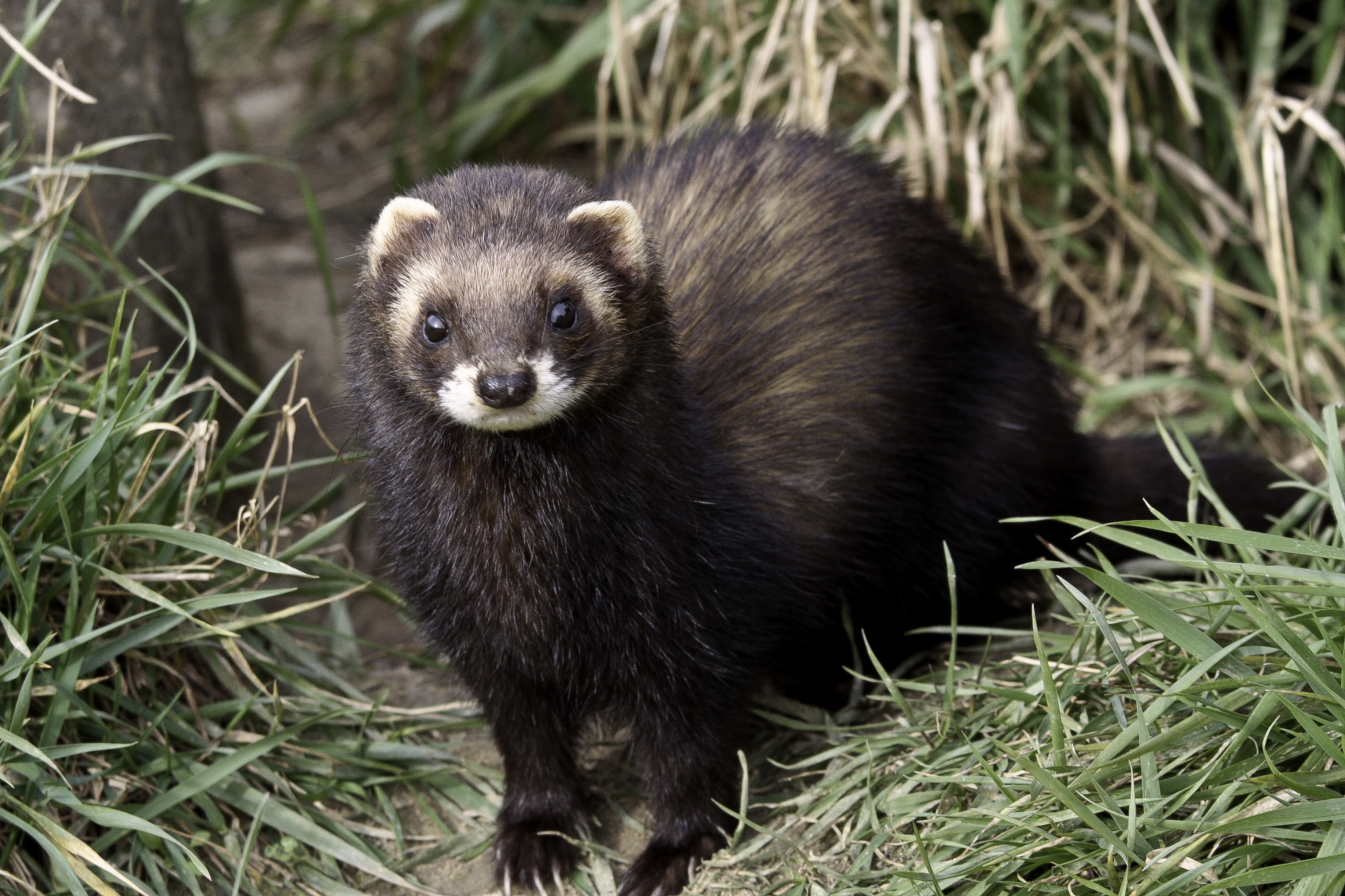
Photo: Polecat ©Anne Newton
What is the status of polecats in Scotland?
Whilst polecats are doing well in England and Wales, this recovery has not been seen in Scotland and polecats are still absent from large parts of the country. It’s thought that polecats became extinct in Scotland during the early 20th century, although it has been suggested that a small population hung on in Caithness and Sutherland. Polecats have since been reintroduced to parts of Scotland, including Argyll, Loch Ness-side and Perthshire, with mixed success. The population in Perthshire and Angus seems to be well-established, comprising a mixture of polecats and polecat-ferrets, but the status of the population in Argyll is unknown. Additionally, there have been a small number of polecat records in Dumfriesshire, likely originating from animals which have spread from Cumbria, and isolated records in Caithness and Sutherland. The origins and status of polecats or polecat-ferrets recorded in other areas of Scotland, like the polecat-ferret recently caught by Scottish Invasive Species Initiative in a mink trap in Moray, are a bit of a mystery.
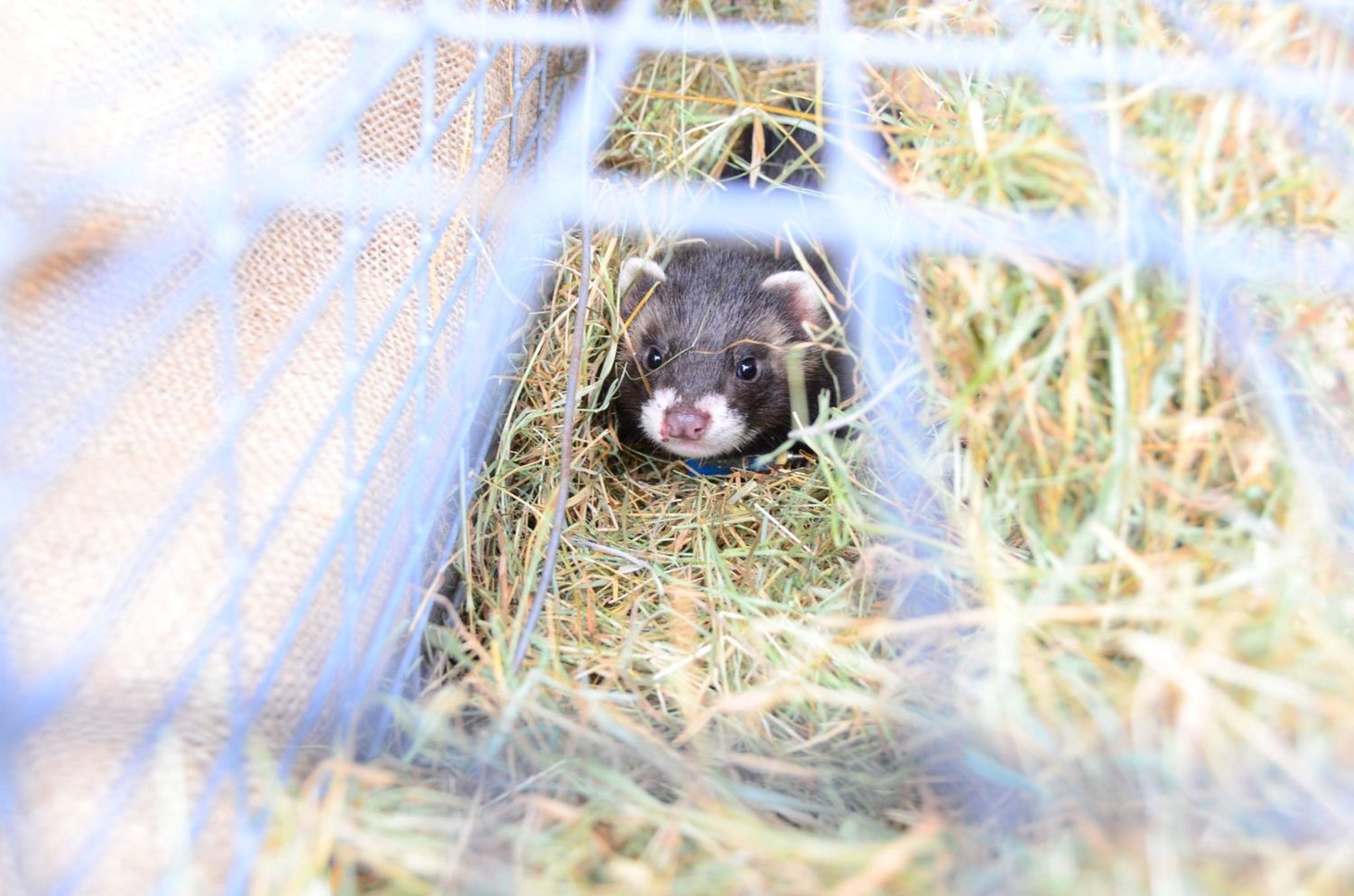
A polecat, wearing a radio-collar as part of a research study, in a trap prior to release. Photo: ©Jane Sedgeley-Strachan
The hybridisation conundrum
Polecats may breed with feral or escaped pet ferrets and produce hybrids, called polecat-ferrets, which can cause a lot of confusion. So how can you tell if an animal is a polecat or a polecat-ferret?
Distinguishing between true polecats and polecat-ferrets can be problematic. Guidelines were developed by VWT and Andrew Kitchener of National Museums Scotland for separating true polecats from polecat-ferrets on the basis of pelage (fur) characteristics. In general, polecat-ferrets tend to be paler in appearance, usually have more extensive pale facial markings than true polecats and may have a pale throat patch and one or more pale paws. By contrast, true polecats have darker pelage and a well-defined white ‘mask’ on the face. There are more detailed guidelines here.
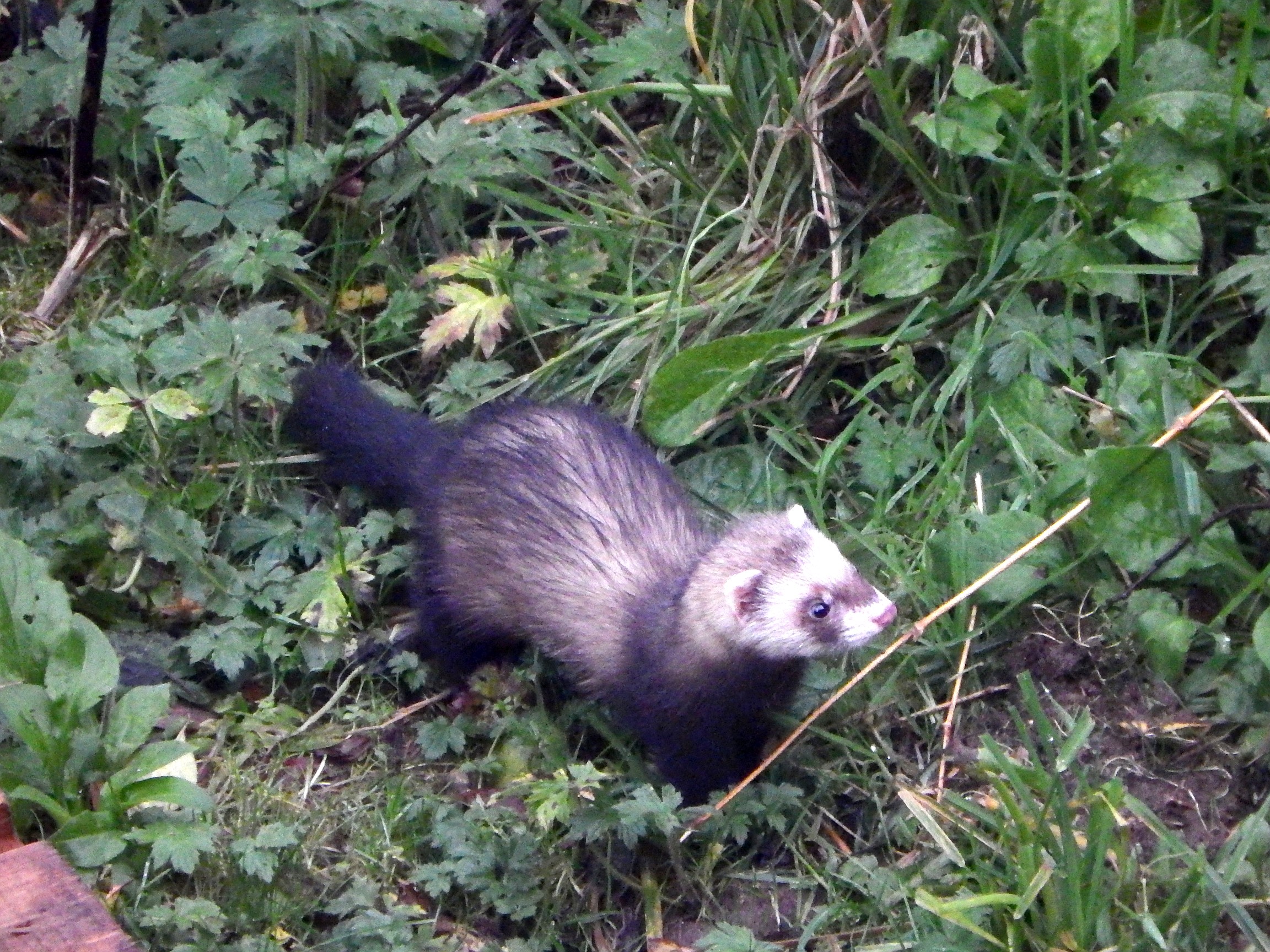
An example of a polecat-ferret, showing ‘ferrety’ features. Photo: ©Andy Wakelin
However, genetic analyses by Cardiff University has cast doubt on this identification protocol. This study showed that the match between phenotype (what the animal looks like) and genotype (its genetic signature) is not perfect, so some animals that look like true polecats actually have ‘ferrety’ ancestry, and vice versa. This work also found that 31% of wild polecats analysed had ‘admixed ancestry’, meaning they had both polecat and ferret genes, with the most ‘pure’ polecats being found well within the polecat’s core range in Wales and the west of England, whereas the most ‘ferrety’ polecats are found towards the edge of the polecat’s range and in reintroduced populations, such as in Scotland. No ‘F1’ hybrids, meaning a first generation offspring of a polecat and a ferret, were detected in the study, which suggests that breeding between the two is probably rare now and the hybrids we see today are probably a result of extensive hybridisation in the past.
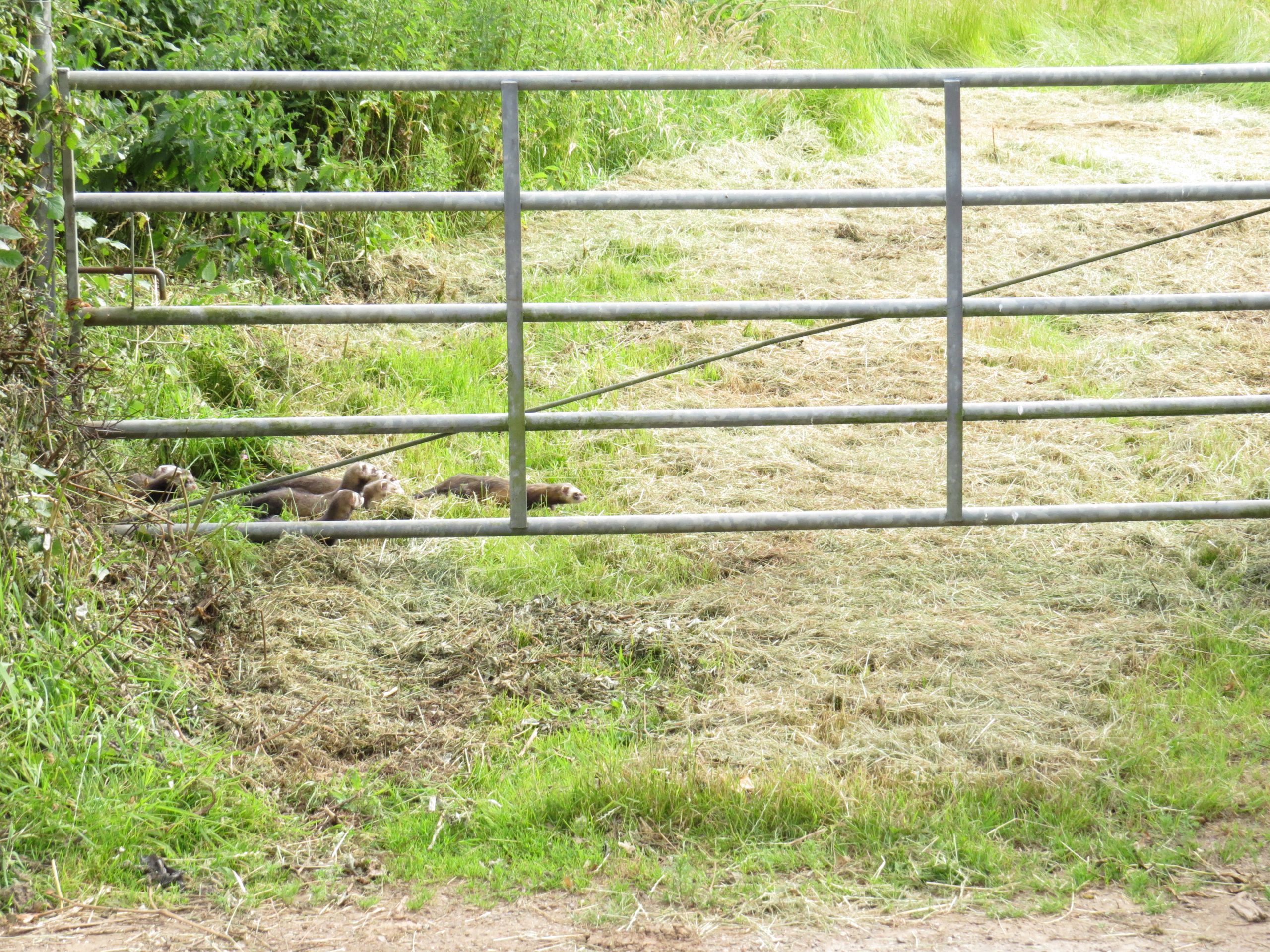
A family of polecat-ferrets in Somerset. Photo: ©Clive Sawyer
The challenges of confidently identifying polecats and polecat-ferrets present a problem for naturalists and biological recorders who need to determine how to classify an animal, particularly in areas where polecats are newly re-colonising and are relatively rare. It can also lead to confusion from a legal standpoint, since polecats have some legal protection and it is an offence to intentionally set a trap for a polecat without a licence, whereas ferrets have no legal protection.
But does it really matter if some of our polecats have some ferret genes in their ancestry and a wild polecat’s great-great grandmother was a ferret?! We recommend taking a pragmatic approach, which acknowledges that polecats may be slightly more diverse in appearance due to this past hybridisation with ferrets and that hybrids carry valuable polecat genes and, as such, should be seen as a valid contributor to the polecat population. There is also evidence to suggest that the true polecat phenotype is dominant over the ‘ferrety’ phenotype. Crucially, ferrets often don’t fare well in the wild as they tend to be docile, tame and less alert and therefore lack the survival skills that wild polecats possess. As the polecat population expands its range, the polecat phenotype is becoming more widespread and it doesn’t appear that the presence of hybrids is acting as a barrier to its ongoing recovery. All of this means that there is a good case for saying ‘If it looks like a polecat and acts like a polecat, let’s call it a polecat.’ That said, it is sensible to try to reduce the number of ferrets ‘lost’ in the wild to make sure that the opportunity for any future hybridisation between polecats and ferrets is minimised.
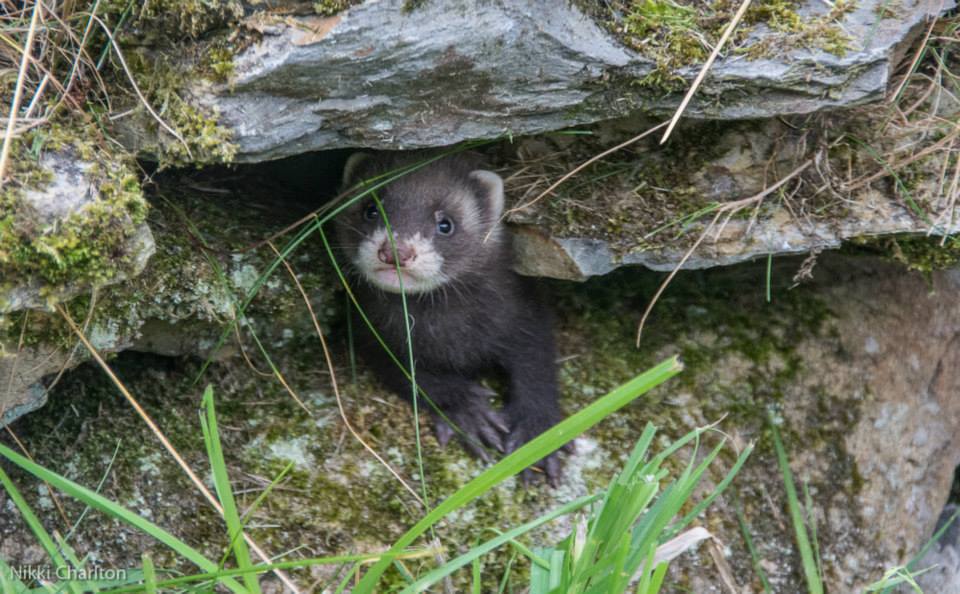
A young polecat on a farm in north Wales. Photo: ©Nikki Charlton
What is the future for polecats in Scotland?
Polecats are still absent from most of Scotland and a sustainable population recovery would need to be achieved either by expansion of the existing populations, such as the one in Perthshire, and/or reintroductions or reinforcements. As current evidence indicates that polecats are declining across much of the rest of Europe, we should be pleased to have one of the few recovering populations of polecats in Britain.
If you see a polecat, please report it to your local biological records centre.
Further reading
Lizzie Croose, VWT Senior Science and Research Officer